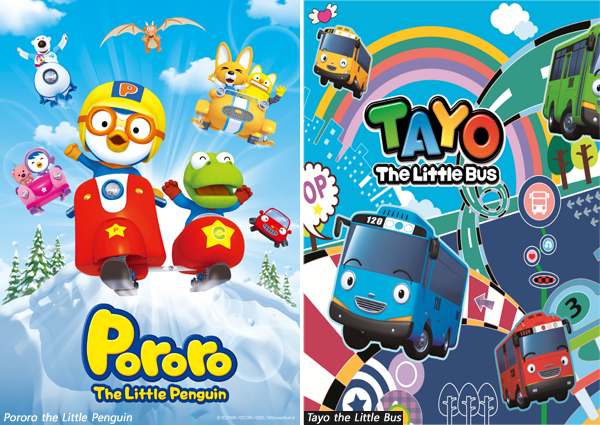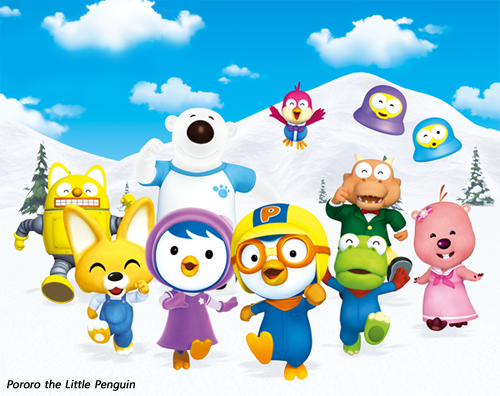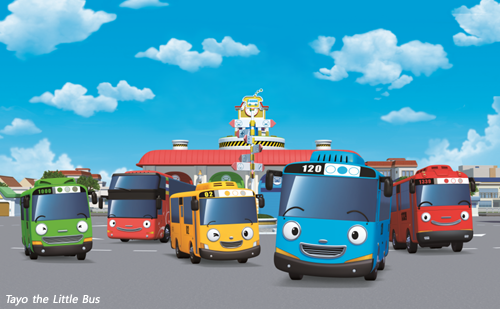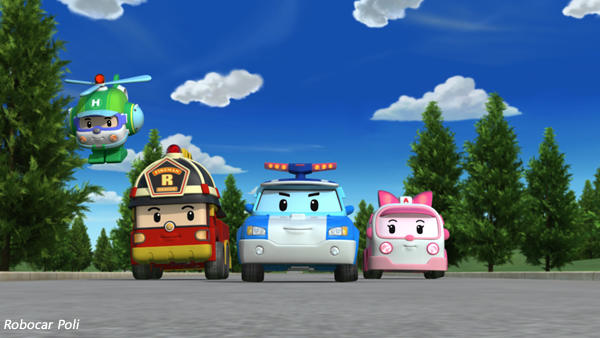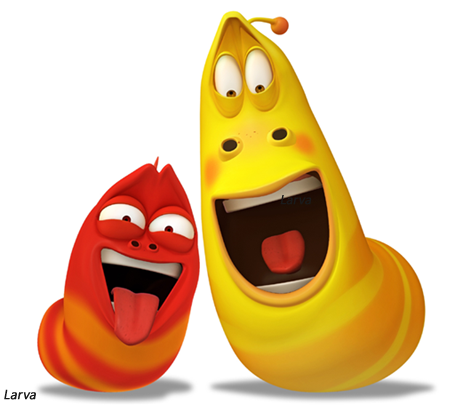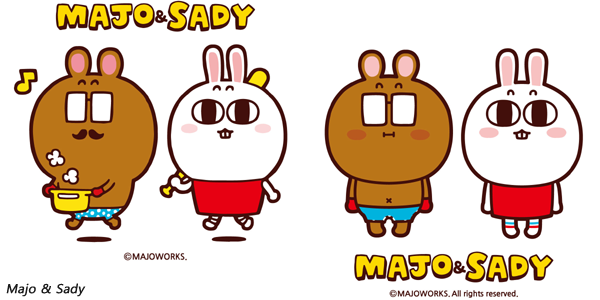Blue and green ‘Tayo’ buses with cute big eyes roam the streets of Seoul. Cars with Red Larva antenna balls push ahead on the roads. Accessories with Majo & Sady and Pucca characters are hot items among women in their teens to twenties.
Recently, local characters such as Pororo the Little Penguin, Tayo the Little Bus, Robocar Poli, Larva, Pucca and Majo & Sady have become popular. This phenomenon isn’t just limited to children’s TV animations and web cartoon series, but also a variety of character merchandise items such as stationery, clothing and cosmetic cases.
These characters not only rearranged the local market dominated by Disney and Japanese animation but have been reaching out to advanced major contents markets in Europe, the U.S. and Japan, continuing to create a new history for the local character merchandising market. Here we introduce a few timeless, borderless Korean-made characters at the forefront of opening the golden age of Korean-made characters.
The President of Children: Pororo the Little Penguin
Pororo the Little Penguin series created by Iconix Entertainment began airing in 2003. And as the saying goes, “If it’s parents that contribute to half of child care, leave the other half to Pororo,” the character earned the nickname, Pororo the President of Children.
The little penguin Pororo and his friends, Loopy the beaver, Crong the dinosaur, Poby the polar bear, Eddy the fox, Petty the penguin, and Harry the bird who live far away in a snow and ice-covered forest had the perfect appearances and characteristics to suit children aged between 3 and 7. Like the lyrics in its main theme song, “I’d love to play all day,” playing, fighting and making up are what take up most of the friends’ daily routine portrayed in a warm and affectionate way enough to often touch the hearts of adults.
Pororo’s character was an explosive success in the character merchandising industry as well. With 2,500 different items in the market, there rarely are children’s products that go without a Pororo face on them. Meanwhile, items with negative influence on children such as fast food and toy weapons were excluded from licensing and this in turn further raised the brand image of the character.
So far, the TV series that ran for 5 seasons has been sold to more than 130 countries, winning the hearts of children worldwide. The series has been playing on Spanish TV station CLANTV and Brazilian TV station TVCULTURA since last October. Theme parks have also opened in China’s Beijing, Chongqing, Dalian, Guangzhou and Singapore while a Pororo Aqua Park will open in Thailand this December.
Roaming the world: Tayo the Little Bus
Tayo is another global star created by the production company of Pororo, Iconix Entertainment. This character was modeled after city buses that have become a common means of public transportation. The TV series,
Tayo the Little Bus, started running from 2010, introducing the daily lives of little buses that just started its routine between the garage and the city streets: Tayo; and his friends Rogi; Lani; and Gani; as well as a tow truck; a bulldozer; a concrete mixer truck; a police car; a fire truck; an ambulance; and an excavator.
Gaining popularity with his cute and friendly image, Tayo literally took to the streets on March 26th to commemorate ‘Public Transportation Day’ with city buses transformed into Tayo buses. The 4 Tayo buses commissioned as a special event by the Seoul Metropolitan Government now have become an attraction whereby a little over 100 buses are running permanently, and Tayo bus stop was set up at the Myeongdong subway station last October. Including the distribution rights and merchandise licensing,
Tayo the Little Bus has been sold to 22 countries and received the ‘Best Preschool Education Program’ at the Asian Television Awards in 2012.
Protector of the World: Robocar Poli
Police car Poli, fire truck Roy, ambulance Amber and helicopter Helly are transforming robot cars in a rescue team in the beautiful island village of Brooms Town. These animation characters created by RoiVisual first hit the airwaves in 2011. As robots transform to execute special missions, these characters show more dynamic action features compared to other characters.
With its emphasis on the significance of safety through dangerous situations, Robocar Poli earned the appointment as the ‘Ambassador of Children’s Safety’. Now a global star with the series sold to 98 countries including France, Russia and Taiwan, Robocar Poli has been running 52 of its episodes on a Chinese children channel, CCTV 14, from October 16th, 2014. Robocar Poli merchandise is being sold in 1,000 toy stores nationwide in China and is currently scheduled to enter Chinese theme parks as well.
A Little Filthy, Popular Nevertheless: Larva
Larva is a local animated character created by TUBAn Co., Ltd in 2009. The series first showcased as a 3D animation about the adventures of two larvae, Yellow and Red. Filthy locations are a common aspect for the larvae residing in the sewer, yet this is what makes the series more interesting along with its laughter-triggering slapstick comedy element.
Red is an aggressive larva whose specialty is shouting and kicking, while Yellow is a gluttonous, fart-bag with a runny nose. Larva’s unique character images are in fact being used in diverse public campaigns for the subway, the Ministry of Environment’s reduction of food waste, and the Korea Transportation Safety Authority’s prevention of overspeed. Furthermore, around 1,000 merchandise items with its characters such as stationary, toys, books, clothing and food products have been released. The series is currently being broadcasted in 150 countries including the U.S., China, U.K. and Brazil, and its creators have signed merchandise licensing contracts with more than 25 countries.
Captivating women in their 20’s: Pucca
Pucca was created for female consumers between their teen and twenties in 2000, as a flash animation by character design company Vooz Co., Ltd.. The main storyline revolves around the aggressively straightforward attempts of Pucca, a bright girl, to show her affection to the brave but reserved martial arts boy, Garu.
Starting out as an online animated flash movie that developed into an animated online e-card service, Pucca was soon licensed into offline merchandise items that became a big hit among young women. The character has been licensed for bags, clothing and accessories, while the character reached markets in Europe including France and Italy as well as Chinese territories where the brand value was recognized on a popular basis.
In 2004, its creators signed a TV animation investment, distribution and merchandising contract with Disney, and as a result, the first TV series Pucca hit the airwaves in 2006 through the Disney channel, and this series ended up running in 110 countries.
Welcome to the department store: Majo & Sady
Web cartoons have become the cradle for many characters. Majo and Sady are characters from one: Majo & Sady, created by JEONG Cheol-yeon, the author of web cartoon Marine Blues, in collaboration with Intel. The web cartoon based on the idea of “a working wife and a housekeeping husband,” earned considerable acclamation online and offline with its empathy-evoking focus on the small details of life.
The web cartoon’s popularity subsequently developed into a great demand for the two rabbit-like characters. His funny yet simply drawn characters were of enough merchantable quality. The author set up his own company, Majoworks and jumped into a full-fledged character merchandising business which spans stationery, fashion and cafés. There are individual shops in Lotte Department Store selling clothes, dolls, bags and hats with Majo & Sady characters.
By Ha Jung-min, Cine21 reporter
- See more at:
http://www.koreanfilm.or.kr/jsp/news/features.jsp?pageIndex=1&blbdComCd=601013&seq=278&mode=FEATURES_VIEW&returnUrl=&searchKeyword=
These contents were reproduced with the permission of Kofic, which holds all copyright.
